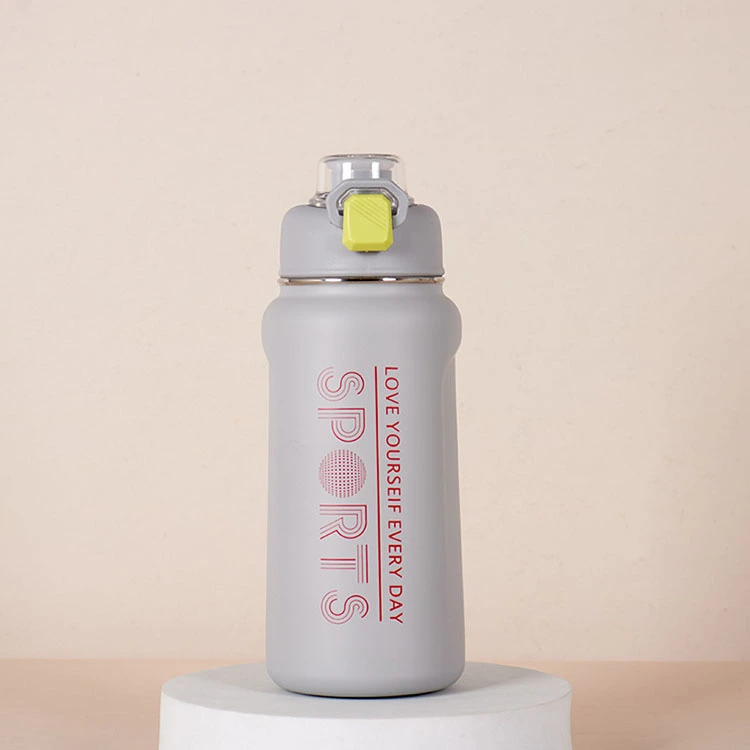Comparison of Different Materials of Stainless Steel Bottles
2025-06-23
Stainless steel bottles have gained widespread popularity for their durability, eco-friendliness, and versatility. They are often preferred over plastic bottles due to their long lifespan, resistance to contamination, and ability to keep beverages hot or cold for extended periods. However, not all stainless steel bottles are created equal, as they come in various grades of stainless steel, each with its own set of characteristics and advantages. In this essay, we will explore the differences between the most common types of stainless steel used for bottles: 304 stainless steel, 316 stainless steel, and 201 stainless steel.
1. 304 Stainless Steel (Food-Grade Stainless Steel)
304 stainless steel is the most commonly used material for stainless steel water bottles. It is a versatile, corrosion-resistant alloy composed of 18% chromium and 8% nickel. Known for its excellent resistance to rust and staining, 304 stainless steel is frequently referred to as "food-grade" steel. This makes it a popular choice for manufacturers of water bottles and other drinkware.
Advantages of 304 Stainless Steel:
Corrosion Resistance: 304 stainless steel offers great resistance to corrosion and rust, even in moist environments, making it ideal for water bottles that come into contact with liquid regularly.
Non-Reactive: It does not impart any metallic taste to the contents, ensuring that the flavor of the drink remains unaltered.
Durability: This steel can withstand a significant amount of wear and tear, meaning that 304 stainless steel bottles tend to last for years with proper care.
Disadvantages of 304 Stainless Steel:
Price: Due to the higher nickel content, 304 stainless steel is more expensive than some other materials like 201 stainless steel.
Not Ideal for Highly Acidic Liquids: While it offers general resistance to corrosion, highly acidic liquids over prolonged periods can eventually affect the material.

2. 316 Stainless Steel (Marine-Grade Stainless Steel)
316 stainless steel is often considered the superior choice for stainless steel bottles due to its higher resistance to corrosion, particularly against harsh environmental factors such as saltwater. It is an alloy that contains 16% chromium, 10% nickel, and 2% molybdenum, the addition of which significantly enhances its ability to resist rust and corrosion.
Advantages of 316 Stainless Steel:
Exceptional Corrosion Resistance: The molybdenum content in 316 stainless steel provides a higher level of corrosion resistance, making it ideal for extreme environments, such as marine conditions. This makes 316 a great option for people who use their bottles in salty or humid climates.
Durability: 316 stainless steel is even more durable than 304, making it resistant to scratches, dents, and other damage.
Non-Reactive: Similar to 304, 316 stainless steel is also non-reactive, so it won’t affect the taste of your beverage.
Disadvantages of 316 Stainless Steel:
Price: 316 stainless steel is more expensive than 304, making bottles made from this material pricier. For those who don’t need the added corrosion resistance, this could be an unnecessary investment.
Weight: While not dramatically heavier, 316 stainless steel is a bit denser than 304, which could make bottles slightly heavier.
3. 201 Stainless Steel (Lower-Grade Stainless Steel)
201 stainless steel is an alloy that contains 16-18% chromium and 3.5-5.5% nickel. It is a lower-cost alternative to 304 and 316 and is commonly used in budget-friendly stainless steel bottles. While it offers some degree of corrosion resistance, it is not as durable or rust-resistant as 304 or 316 stainless steel.
Advantages of 201 Stainless Steel:
Affordability: 201 stainless steel is the most cost-effective option for manufacturing stainless steel bottles. For budget-conscious consumers, it provides a way to enjoy a stainless steel bottle without the higher price tag.
Sufficient for General Use: For those who only need a stainless steel bottle for basic daily hydration and aren’t using it in extreme environments, 201 stainless steel may be more than adequate.
Disadvantages of 201 Stainless Steel:
Less Corrosion Resistance: Compared to 304 and 316, 201 stainless steel is more susceptible to rust and corrosion. While it is still more durable than plastic, it’s not ideal for prolonged exposure to water or acidic drinks.
Less Durable: 201 stainless steel is more prone to dents and scratches, making it less durable over time.
Potential for Metallic Taste: In some cases, 201 stainless steel may leach a metallic taste into beverages, especially if the bottle is used for liquids like fruit juice or acidic beverages.
Conclusion
When choosing a stainless steel bottle, the material used plays a significant role in its performance, durability, and cost. 304 stainless steel offers a great balance between quality and price, making it an excellent choice for most people. 316 stainless steel is the best option for those who need extra durability and corrosion resistance, particularly in challenging environments, although it comes at a higher price point. Finally, 201 stainless steel is an affordable alternative for consumers looking for a basic, everyday water bottle, though it may not offer the same level of performance or longevity as the higher-grade steels.
Ultimately, the choice of material depends on individual needs, lifestyle, and budget. Those who prioritize quality and longevity may opt for 304 or 316 stainless steel, while those on a budget may find 201 stainless steel sufficient for their daily hydration needs.
As a professional manufacturer and supplier, we provide high-quality products. If you are interested in our products or have any questions, please feel free to contact us.


